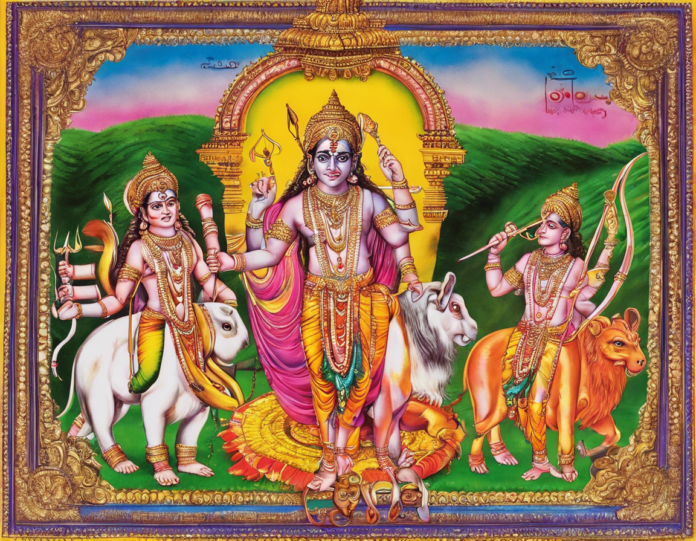The Ramayana is an ancient Indian epic that has been passed down through generations, captivating audiences with its timeless tale of love, devotion, and righteousness. One of the most popular and widely-read versions of the Ramayana is the one penned by the sage Valmiki. This epic has been translated into numerous languages, including Kannada, one of the Dravidian languages spoken predominantly in the South Indian state of Karnataka.
The Ramayana in Kannada
Kuvempu, a renowned Kannada poet and writer, translated the Ramayana into Kannada, introducing this timeless tale to a whole new audience. His rendition of the epic captures the essence of the original story while infusing it with the rich cultural and linguistic nuances of the Kannada language.
Themes and Characters
The Ramayana is not just a story but a reflection of human virtues and vices. It explores a range of themes, including dharma (duty), loyalty, love, sacrifice, courage, and devotion. At the heart of the epic is the story of Lord Rama, the prince of Ayodhya, and his beloved wife Sita. The narrative follows their exile to the forest, Sita’s abduction by the demon king Ravana, and Rama’s quest to rescue her with the help of his loyal companion Hanuman.
Significance of the Ramayana in Kannada Literature
The Kannada Ramayana holds a special place in the regional literary canon, showcasing the linguistic prowess of Kannada poets and their ability to adapt and interpret ancient texts. It has played a vital role in preserving and promoting the cultural heritage of Karnataka and has been instrumental in shaping the moral and ethical values of the Kannada-speaking populace.
Cultural Impact
The Ramayana, whether in its original Sanskrit form or translated into Kannada, has left an indelible mark on Indian culture and society. It has inspired generations of artists, writers, musicians, and filmmakers, who have drawn upon its rich tapestry of characters and events to create their own works of art.
Key Differences in the Kannada Version
While the core story of the Ramayana remains consistent across different translations and interpretations, each version brings its unique flavor and perspective to the narrative. The Kannada Ramayana, with its distinct language and cultural nuances, offers readers a fresh lens through which to view this timeless epic.
Exploring the Ramayana in Kannada
For those interested in delving into the world of the Ramayana in Kannada, there are various resources available, including printed editions of Kuvempu’s translation, online versions, audio renditions, and theatrical adaptations. Immersing oneself in the Kannada retelling of this epic is a rewarding experience that allows readers to appreciate the beauty and depth of this ancient tale in a new light.
Conclusion
The Ramayana in Kannada is not just a literary masterpiece but a cultural treasure that embodies the values and beliefs of a society deeply rooted in tradition and spirituality. Through its engaging narrative and memorable characters, this epic continues to enchant audiences and remind them of the timeless virtues that define the human experience.
FAQs
1. What is the significance of the Ramayana in Indian culture?
The Ramayana is revered as a sacred text in Hinduism and has played a crucial role in shaping Indian literature, art, and morality.
2. How does the Kannada version of the Ramayana differ from other interpretations?
The Kannada Ramayana infuses the epic with the linguistic and cultural nuances of the Kannada language, offering readers a unique perspective on the timeless tale.
3. Who are some of the key characters in the Ramayana?
Prominent characters in the Ramayana include Lord Rama, Sita, Hanuman, Ravana, Lakshmana, and Rama’s loyal devotee, Jatayu.
4. Why is the story of the Ramayana still relevant today?
The themes of love, devotion, righteousness, and duty explored in the Ramayana continue to resonate with audiences across generations and cultures.
5. How can I access the Kannada version of the Ramayana?
The Kannada Ramayana is available in bookstores, online platforms, and through cultural organizations dedicated to promoting Kannada literature and heritage.

